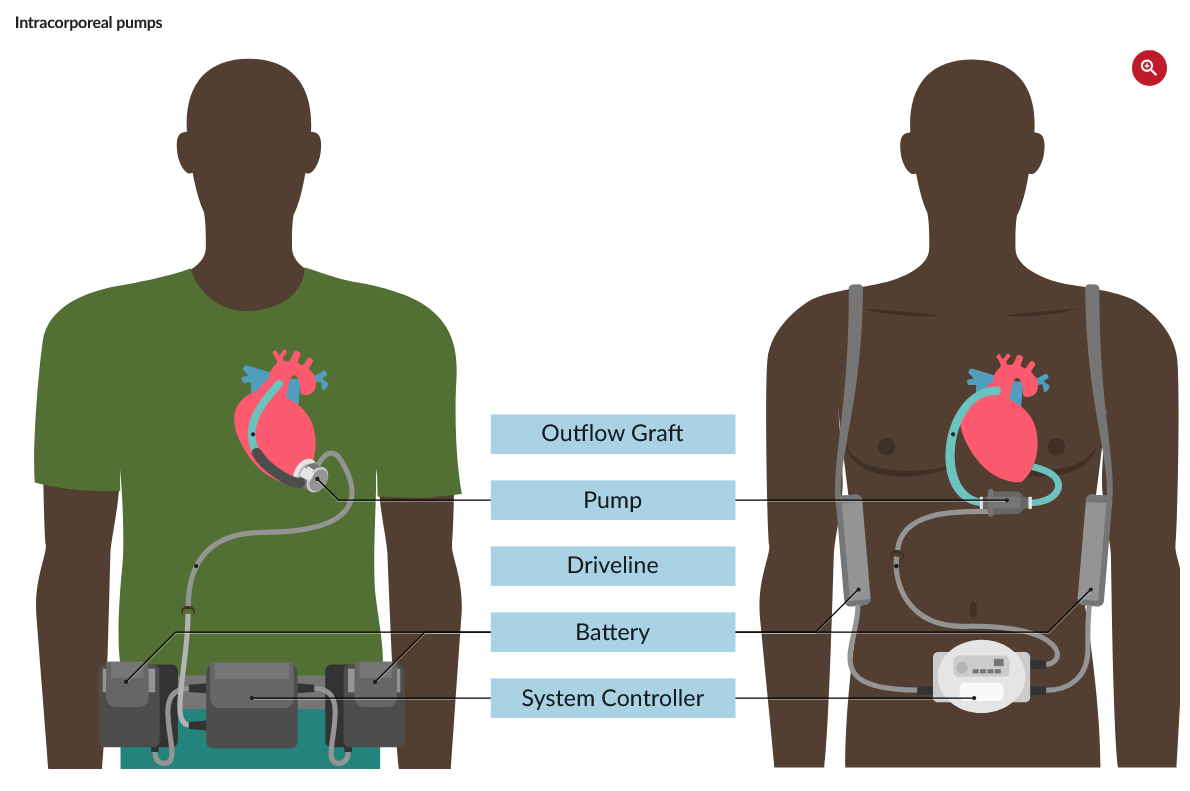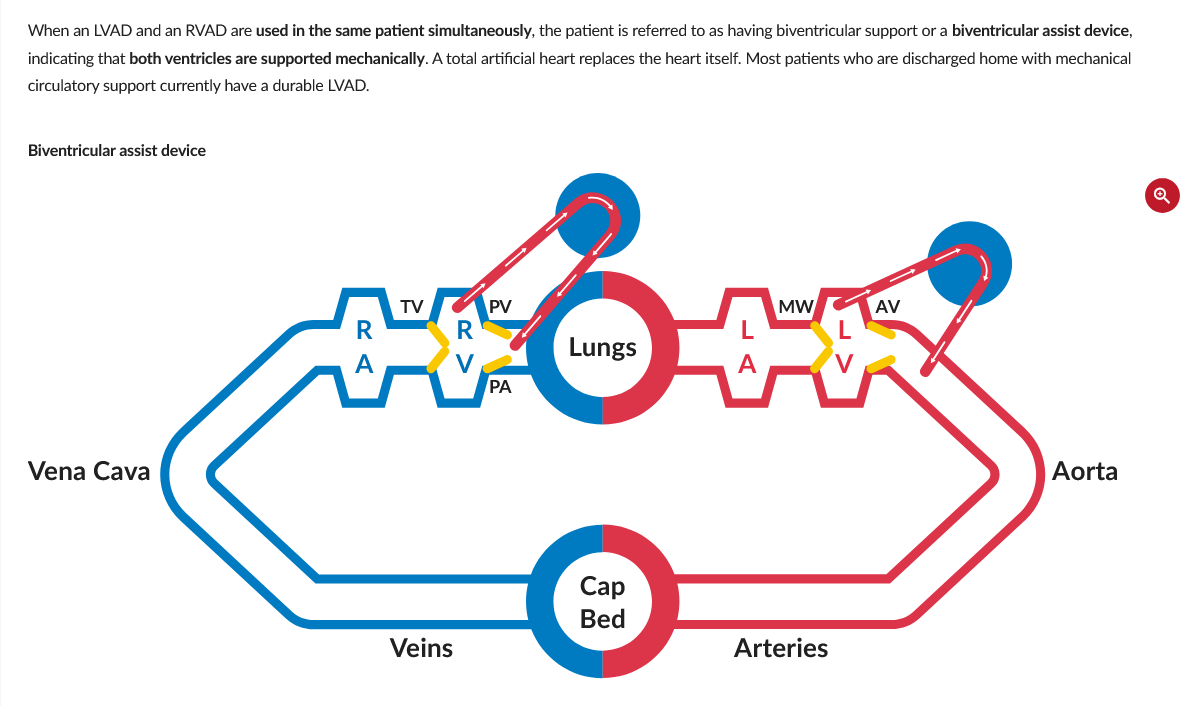VAD
- related: Cardiology
- tags: #literature #cardiology

The 2 most common causes of pump failure are disconnection of the power or of the driveline. Therefore, the first step in assessing an unresponsive, mentally altered, or hypotensive VAD patient is to ensure that all connections are secure and an adequate power source is connected.
Controller malfunction, damage, or disconnection can also lead to pump dysfunction or stoppage. All patients should have a backup controller with them, as well as backup batteries for emergency replacement, in case of damage or malfunction. EMS providers must keep patients and their backup equipment together at all times because replacement equipment may be limited or nonexistent at receiving hospitals, particularly at non-VAD centers. To reiterate, when a mechanical circulatory support patient is
transported by EMS, all of the patient’s VAD equipment must accompany him or her to the hospital to ensure continued mechanical support.
The driveline that connects the controller to the device is a potentially vulnerable component and is subject to wear, damage, or kinking, which can result in device malfunction. Although driveline wiring has built-in redundancy as a safety measure, driveline trauma can cause internal damage and lead to pump failure. Damage can be acute, such as a cutting or crush injury, or it can be the result of chronic stress or fatigue on the line. In these settings, there will often be alarms preceding or accompanying the pump stoppage, but alarms will cease once the batteries are drained.
